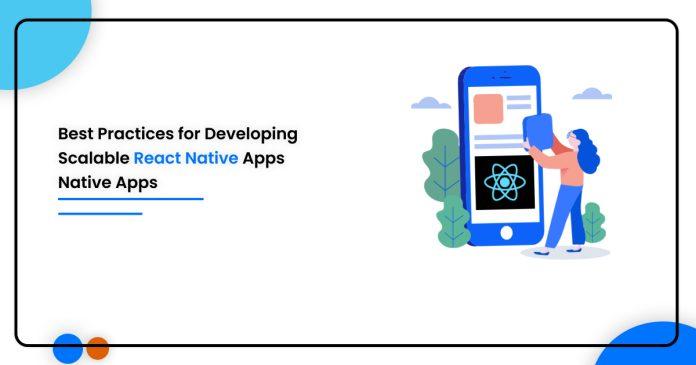Introduction: In today’s fast-paced mobile app development landscape, building scalable and performant apps is crucial for success. React Native, a popular framework for cross-platform mobile app development, offers developers a powerful toolset to create high-quality apps efficiently. However, to ensure scalability and maintainability, it’s essential to follow best practices throughout the development process. In this blog post, we will explore a set of best practices for developing scalable React Native apps.
-
Code Organization and Modularization:
- Follow a modular architecture to break down your app into reusable components.
- Utilize folder structures that align with the app’s feature or domain to improve code organization.
- Separate business logic from the UI layer using container and presentational component patterns.
-
State Management:
- Choose a suitable state management solution like Redux or MobX to handle complex application states.
- Normalize your data structures to avoid unnecessary duplication and improve data consistency.
- Use selectors to efficiently derive derived state from the application state.
-
Performance Optimization:
- Minimize the number of re-renders by using PureComponent or memoization techniques.
- Implement shouldComponentUpdate or React.memo to prevent unnecessary re-rendering of components.
- Utilize virtualized lists and pagination for efficient rendering of large datasets.
-
Networking and Data Handling:
- Use efficient network libraries, such as Axios or Fetch, for making API calls.
- Implement caching mechanisms to reduce network requests and improve app performance.
- Handle errors and edge cases gracefully by providing appropriate error handling and fallback mechanisms.
-
Testing:
- Write comprehensive unit tests for critical business logic using testing frameworks like Jest.
- Use snapshot testing to capture and compare UI component renders.
- Consider implementing end-to-end testing using tools like Detox or Appium to ensure app functionality across platforms.
-
Security:
- Implement secure authentication and authorization mechanisms using industry-standard protocols.
- Protect sensitive data by implementing encryption and secure storage practices.
- Regularly update dependencies to mitigate security vulnerabilities.
-
Continuous Integration and Deployment:
- Set up a robust CI/CD pipeline to automate the build, testing, and deployment processes.
- Use code analysis tools to enforce code quality standards and catch potential issues early.
- Leverage over-the-air (OTA) updates to deliver hotfixes and feature updates without requiring app store releases.
-
Performance Monitoring and Analytics:
- Integrate performance monitoring tools like React Native Performance to identify and resolve performance bottlenecks.
- Utilize analytics platforms, such as Google Analytics or Firebase Analytics, to gain insights into user behavior and app usage patterns.
Ready to build your scalable React Native app? Hire our expert React Native developers today and let us bring your vision to life. Contact us now to discuss your project requirements and get started on creating an exceptional mobile app experience.
Conclusion: Developing scalable React Native apps requires careful consideration of various aspects, including code organization, state management, performance optimization, networking, testing, security, continuous integration, and performance monitoring. By following the best practices outlined in this blog post, you can build robust and scalable apps that deliver a smooth user experience and can easily adapt to future growth and requirements. Remember to continuously stay updated with the latest developments in the React Native ecosystem and leverage community resources to enhance your development process.
